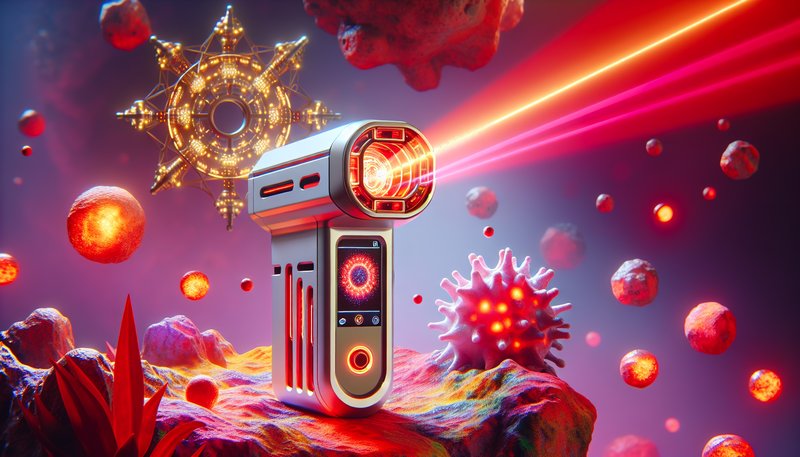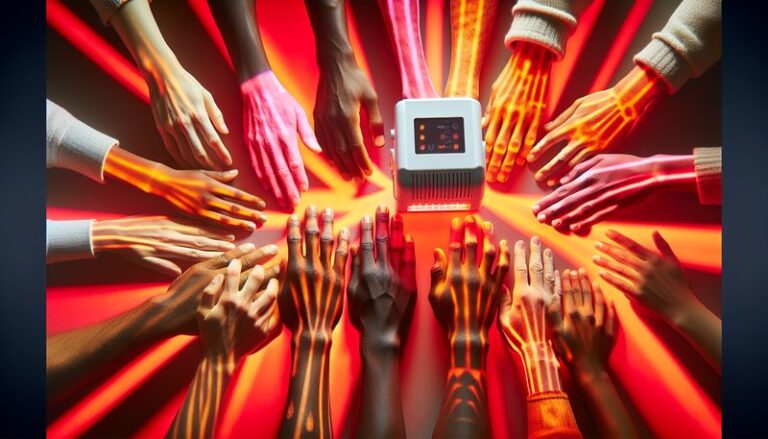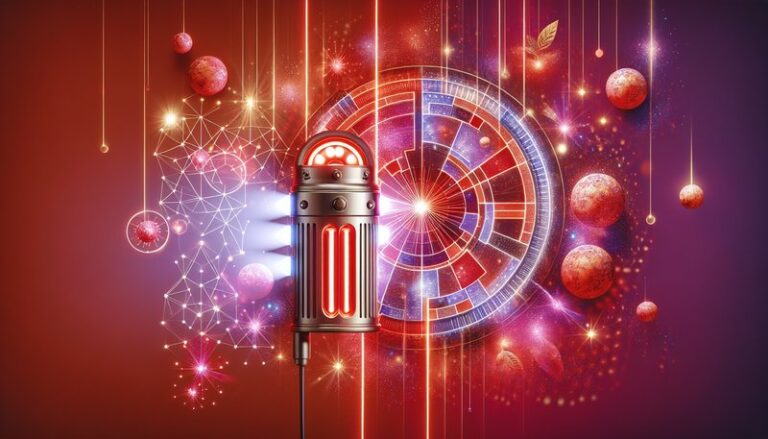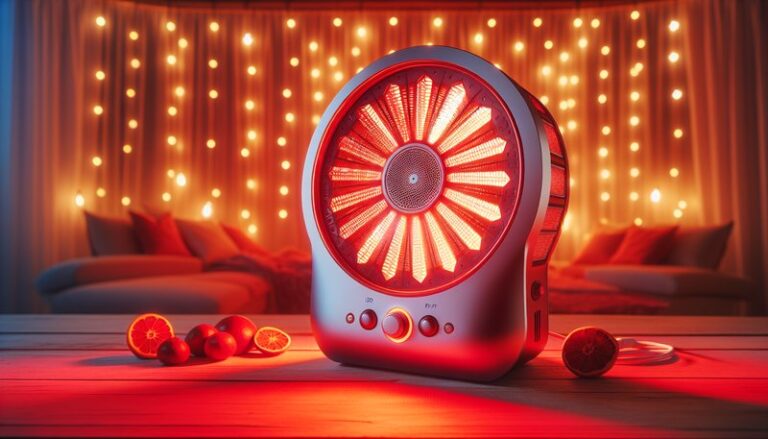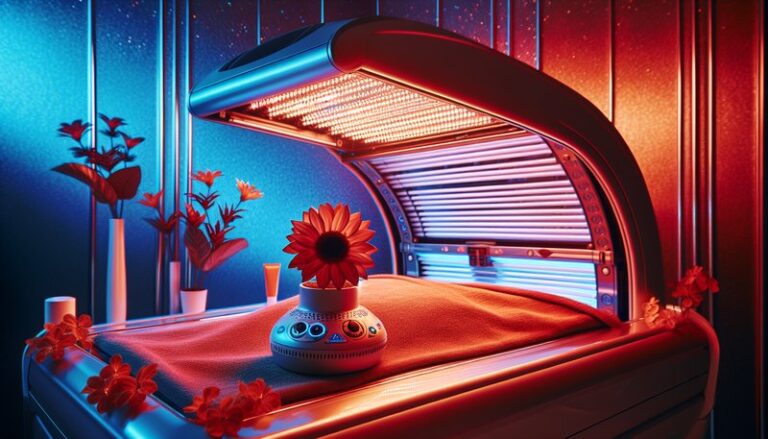Does Red Light Therapy Work On Cold Sores?
Does Red Light Therapy Work On Cold Sores?
Is there hope for those suffering from the discomfort and unsightliness of cold sores?
Cold sores, primarily caused by the herpes simplex virus, can be painful and embarrassing. Many individuals are on the lookout for effective treatments to alleviate symptoms and speed up healing. In this article, we will explore the role of red light therapy in treating cold sores, discussing its effectiveness, associated benefits, considerations, and alternatives.
Key Takeaways
- Red light therapy may help reduce the duration and severity of cold sores by promoting healing.
- This non-invasive treatment stimulates cellular energy production and enhances circulation.
- Alternatives such as antiviral medications and natural remedies are also available and can be effective.
What is Red Light Therapy?
Red light therapy (RLT) involves the use of low-level wavelengths of red light to penetrate the skin and promote healing. It works on a cellular level, enhancing the mitochondria’s ability to produce adenosine triphosphate (ATP), which is essential for cell regeneration and repair.
This therapy has gained popularity due to its wide range of applications, including skin rejuvenation, pain relief, and inflammation reduction. In the context of cold sores, RLT is thought to target the affected area, potentially accelerating recovery.
How Red Light Therapy Works
Red light therapy utilizes specific wavelengths, typically between 600-650 nanometers, to penetrate the skin. Research suggests that this light can stimulate fibroblast activity, increase collagen production, and enhance circulation, all of which are beneficial for skin health and could help in healing cold sores.
What are the Benefits of Red Light Therapy?
This section highlights the main advantages of using red light therapy for cold sores, providing insight into why it may be a valuable treatment option.
Accelerated Healing
One of the most significant benefits is the potential for faster healing. Studies indicate that RLT can reduce inflammation and promote tissue repair, which may shorten the duration of cold sore outbreaks.
Reduced Discomfort
Red light therapy may also help alleviate pain and discomfort associated with cold sores. By promoting circulation and reducing inflammation, it can soothe the affected area, making it a more tolerable experience during an outbreak.
Non-Invasive Treatment
Unlike traditional treatments such as antiviral medications, red light therapy is a non-invasive approach. There are no needles or harsh chemicals involved, which makes it a safer option with fewer side effects.
Enhanced Immune Response
Research suggests that RLT can enhance the immune response in skin cells, potentially allowing the body to fight off the herpes virus more effectively.
Is it Possible to Use Red Light Therapy for Cold Sores?
Yes, red light therapy can be used for cold sores. Its non-invasive nature and ability to promote healing make it an attractive option for many people looking for relief.
What are the Advantages of Using Red Light Therapy?
Employing RLT brings various advantages:
- Convenience: Treatments can be done at home with handheld devices, providing an easy and accessible option for patients.
- No Downtime: Red light therapy sessions typically require little to no recovery time, allowing users to resume their daily activities immediately.
- Minimal Side Effects: Compared to other treatment options, RLT boasts a favorable safety profile, with rare reports of side effects.
What are the Disadvantages of Using Red Light Therapy?
While RLT can be beneficial, there are certain disadvantages to be mindful of:
- Limited Research: Although promising, research on red light therapy’s efficacy specifically for cold sores is still emerging. As a result, it should be considered a complementary rather than a standalone treatment.
- Cost of Devices: High-quality red light therapy devices can be expensive, which may limit access for some individuals.
- Time Commitment: Regular sessions are often required for optimal results, which may be inconvenient for people with busy schedules.
What are the Things to Consider Before Using Red Light Therapy?
Before starting red light therapy, there are important factors to keep in mind to ensure safe and effective treatment.
Consultation with a Healthcare Provider
Consulting a healthcare professional is crucial to determine if RLT is appropriate for your specific condition. They can provide guidance on the best approach and help manage expectations.
Device Quality and Specifications
Evaluate the quality and specifications of the red light therapy device before purchase. Look for well-reviewed devices with the appropriate wavelength and power output for effective treatment.
Consistency in Treatment
RLT requires consistency for the best results. Users need to commit to a regular schedule for sessions, which may vary in duration and frequency depending on individual needs.
What are the Alternatives to Red Light Therapy?
For those seeking options beyond red light therapy, several alternative treatments exist for cold sores.
Antiviral Medications
Prescription and over-the-counter antiviral medications, such as acyclovir and valacyclovir, are commonly used to manage cold sores. They reduce severity and duration when taken at the first sign of an outbreak.
Natural Remedies
Natural remedies like aloe vera, tea tree oil, and lysine supplements have been reported to provide relief for some individuals. These options can be worth exploring, particularly for those preferring holistic treatments.
Topical Treatments
Numerous topical creams and ointments are available to ease the symptoms of cold sores. Common ingredients include benzyl alcohol and docosanol, which may help speed up healing and reduce discomfort.
Conclusion: Is it Recommended to Use Red Light Therapy for Cold Sores?
In summary, red light therapy presents an intriguing option for treating cold sores due to its potential healing benefits, reduced discomfort, and non-invasive nature. While it shows promise, it should be viewed as a complementary treatment alongside established antiviral therapies. Individuals considering RLT should consult their healthcare provider for tailored advice tailored to their circumstances.
Frequently Asked Questions
How soon should I start red light therapy after noticing a cold sore?
It’s most effective to start red light therapy at the first sign of an outbreak, as this may help reduce severity and duration.
Find out in Red Light Therapy for Fat Loss?
How long does a red light therapy session typically last?
Sessions generally last between 10 to 20 minutes, depending on the device’s specifications and manufacturer recommendations.
For more insights, see Red Light Therapy: Before or After Workout?
Can I use red light therapy while on antiviral medication?
Yes, red light therapy can be used alongside antiviral medications. However, always consult your healthcare provider to ensure it fits within your treatment plan.
How often should I use red light therapy for cold sores?
For best results, using RLT 2-3 times a week during an outbreak may be beneficial, but frequency can vary based on individual response and device instructions.
Are there any risks associated with red light therapy?
RLT is considered safe, with minimal risks; however, eye protection should be used during treatments to avoid potential eye damage from the light exposure.
